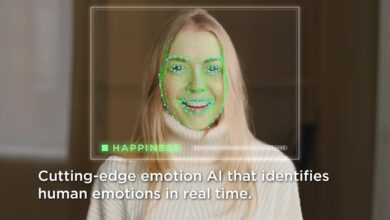
- LinkedIn is testing an innovative AI-driven tool designed to revolutionize the job search process. Learn how this tool can uncover hidden job opportunities and help you find the perfect role faster.
In an era where technology is rapidly reshaping the job market, LinkedIn is making a bold move by testing a new AI-powered job-hunting tool that could change the way job seekers find their next opportunity. This tool, powered by a custom large language model (LLM), leverages artificial intelligence to scan vast amounts of data and surface job listings that might have previously remained hidden through traditional search methods.
Revolutionizing Job Searches with AI
Job hunting can be a daunting task, and LinkedIn’s new AI tool aims to make it a lot easier. While typical job searches rely heavily on keywords, LinkedIn believes there’s more to discovering the perfect role than just matching terms. Ryan Roslansky, CEO of LinkedIn, emphasized that, “The reality is, you don’t find your dream job by checking a set of keywords.” This innovative tool promises to help job seekers uncover relevant opportunities they may not have found otherwise.
With AI constantly evolving, this new tool is just one of many steps LinkedIn is taking to transform the job search experience. It aligns with other cutting-edge AI developments, such as OpenAI’s Deep Research tool and similar offerings from Google, which automate the process of scouring the web for job listings and research.
How LinkedIn’s AI Tool Works
LinkedIn’s new AI tool uses a custom-built large language model (LLM), the same kind of AI that powers advanced tools like ChatGPT, to dive deep into LinkedIn’s massive data set. Traditional search tools on LinkedIn usually focus on job titles and keywords, but this new tool goes a step further by analyzing job descriptions, company information, and posts across the platform.
Features of LinkedIn’s New AI Job-Hunting Tool:
- Deeper Search Capabilities: The AI tool can parse through more than just basic job titles. It considers the full context of job descriptions, company profiles, and peer information, offering a broader view of potential job matches.
- Personalized Search Queries: Job seekers can input more specific and tailored search queries. For example, “Find me a role where I can use my marketing skills to help the environment” or “Show jobs in marketing that pay over $100K.”
- Skill Recommendations: The AI can also help users identify the skills they may need to develop in order to qualify for specific roles. This adds an additional layer of support for career growth and development.
- AI-Powered Ranking and Relevance: LinkedIn’s AI tool analyzes query understanding, job retrieval, and ranking using its LLM to ensure more relevant and personalized results.
According to Rohan Rajiv, Director of Product at LinkedIn, the AI stack integrates LLMs across every part of LinkedIn’s search and recommendation systems, ensuring a seamless experience from search to results.
Overcoming Challenges in AI Recruitment
AI in recruitment comes with its challenges, particularly when it comes to avoiding biases that can affect how applicants are evaluated. LinkedIn has acknowledged these concerns and taken steps to address them. Suzi Owen, a LinkedIn spokesperson, assured that the company has implemented safety measures to guard against biases that could impact the job search process. This includes addressing criteria that could unintentionally exclude certain candidates or introduce bias into the evaluation of qualifications.
These safety measures are crucial to ensuring that the AI tool remains fair and inclusive, giving all candidates equal opportunities to land the job of their dreams.
More Than Just Job Hunting: AI for Labor Insights
LinkedIn’s AI tool has the potential to be more than just a job search assistant. Wenjing Zhang, Vice President of Engineering at LinkedIn, explained that the new AI stack could also be used for labor insights. By analyzing job descriptions and posts from employees, the tool could identify emerging trends in the types of skills companies are looking for. This feature could be valuable for both job seekers and businesses, offering insights into evolving job market demands.
Is LinkedIn’s AI Job Tool the Future of Job Hunting?
With its potential to uncover hidden opportunities and provide deeper insights into the job market, LinkedIn’s new AI tool could be a game-changer for job seekers. While AI has been met with skepticism in some areas, this tool seems promising for those looking to find relevant jobs that might not appear in traditional search results.
As the job market continues to evolve, it’s clear that AI will play an increasingly important role in shaping the way we find employment. LinkedIn’s new tool is a significant step in this direction, offering a smarter, more efficient way to navigate the job market.
What are your thoughts on LinkedIn’s AI job-hunting tool? Do you think it will help job seekers find better opportunities, or do you have concerns about its impact? Share your opinions in the comments below and join the conversation!







